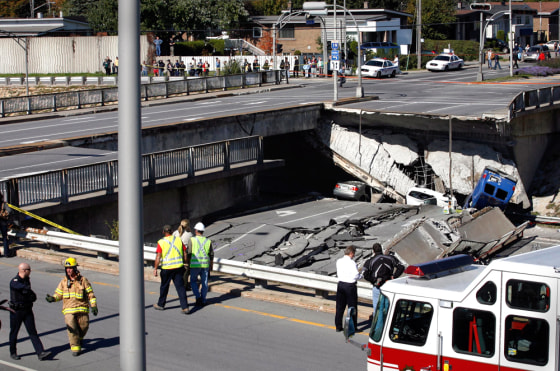NEED TO KNOW
- Ghislaine Maxwell, a convicted child sex offender linked to Jeffrey Epstein, is planning to seek a commutation of her 20-year prison sentence from President Donald Trump
- House Democrats wrote a letter to Trump on Monday, Nov. 10, that Maxwell plans to file a commutation application for the Trump administration’s review, according to reporting by NBC and CBS
- A source close to Maxwell tells PEOPLE that “nobody knows what the President will do"
Ghislaine Maxwell is planning to seek a commutation of her prison sentence from President Donald Trump, according to multiple news reports.
The disgraced 63-year-old former British socialite is currently serving a 20-year federal prison sentence for her role in sex trafficking underage girls alongside financier Jeffrey Epstein.
Democrats on the House Judiciary Committee wrote a letter to Trump on Monday, Nov. 10, saying that Maxwell is planning to file the commutation application for Trump's administration's review, according to reporting by NBC and CBS.
NBC cites a whistleblower and CBS cites a letter obtained by Democrats on the Judiciary Committee and seen by the news outlet.
Per CBS, the letter from the committee's Democrats says it has received information that shows "either that Ms. Maxwell is herself requesting you release her from her 20-year prison sentence for her role as a co-conspirator in Jeffrey Epstein's international child sex trafficking ring, or that this child sex predator now holds such tremendous sway in the second Trump Administration that you and your DOJ will follow her clemency recommendations."
A source close to Maxwell tells PEOPLE that “nobody knows what the President will do.” Trump has been known to have had a social relationship with Epstein and his name was listed in Epstein's flight logs released by the attorney general in February.
The letter from House Democrats further claims Maxwell is receiving “concierge-style” treatment at the minimum-security federal prison camp in Bryan, Texas, where she was transferred in July, NBC News reported.
Per the BOP website, FPC Bryan is described as a facility with “dormitory housing, a relatively low staff-to-inmate ratio, and limited or no perimeter fencing,” compared to the “double-fenced perimeters” at FCI Tallahassee, where she was housed before. At the time, a BOP spokesperson would not confirm the reason Maxwell was moved, PEOPLE previously reported.
In a statement shared with PEOPLE, Sigrid McCawley, an attorney who has represented Epstein accusers including Virginia Giuffre, said, "the news of Ghislaine Maxwell seeking a modification to her prison sentence is deeply disturbing and offensive to the survivors of Jeffrey Epstein and Ghislaine Maxwell. It would be the greatest miscarriage of justice to give any privilege to Maxwell who is a convicted sex offender of young girls."
Want to keep up with the latest crime coverage? Sign up for PEOPLE's free True Crime newsletter for breaking crime news, ongoing trial coverage and details of intriguing unsolved cases.
Maxwell has been seeking a pardon or commutation from Trump in exchange for information on associates of Epstein, a convicted sex offender who died in a Manhattan jail cell in 2019 in what was controversially ruled a suicide as he faced sex trafficking charges.
Earlier this summer, she spoke with Deputy Attorney General Todd Blanche, reportedly speaking about 100 ex-associates of Epstein, and was subpoenaed to testify in front of Congress. That court date has since been postponed, per NBC. However, she has said she intends to assert her Fifth Amendment rights unless she gets immunity from prosecution, PEOPLE previously reported.
If you or someone you know has been a victim of sexual abuse, text "STRENGTH" to the Crisis Text Line at 741-741 to be connected to a certified crisis counselor.
If you or someone you know has been sexually assaulted, please contact the National Sexual Assault Hotline at 1-800-656-HOPE (4673) or go to rainn.org.


:max_bytes(150000):strip_icc():focal(750x349:752x351):format(webp)/ghislaine-maxwell-donald-trump-111025-caeb98f0a64c4bafb1d21921a1128de9.jpg)










